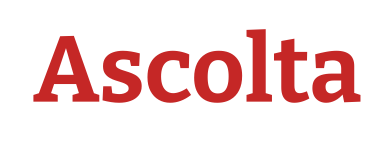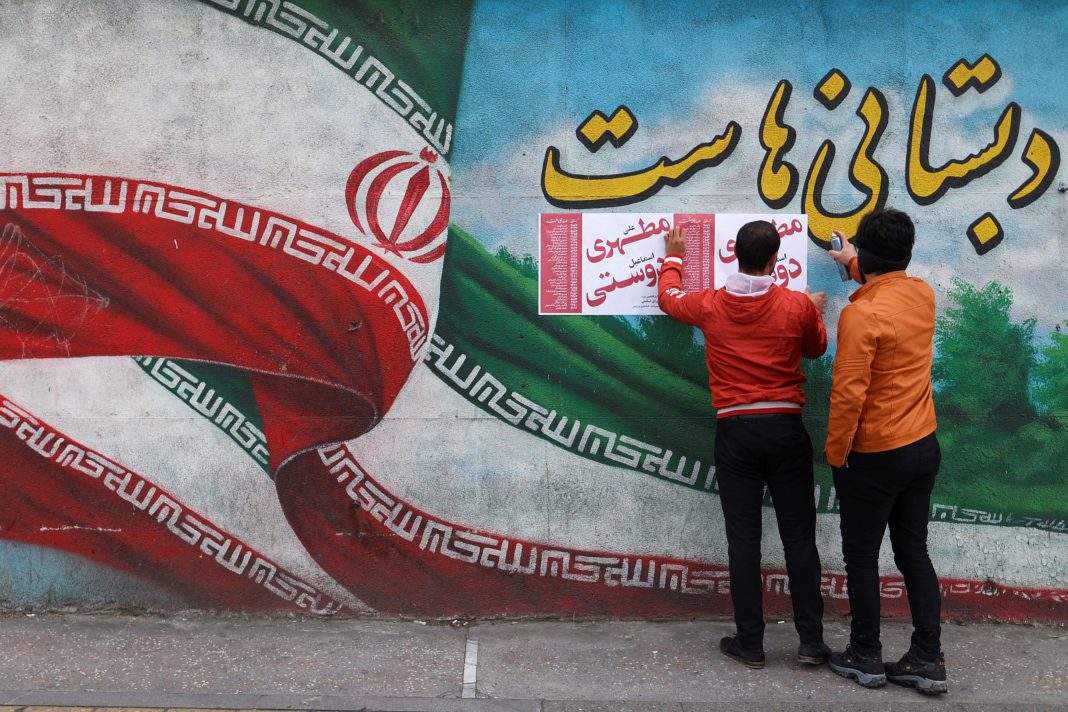While the main attention of the world politicians was focused on the parliamentary elections in Great Britain and France, at about the same time the second round of presidential elections took place in Iran. And as many observers have pointed out, the results of the Iranian elections are much more important in the global dimension than the elections in Great Britain, and the figure of Masoud Pezeshkian deserves more attention and study than the personality of Cyrus Starmer.
In this piece, Ascolta analyzes the results of the Iranian presidential election, as well as identifies possible foreign policy trends in Tehran against the backdrop of the current reshuffle and the overall political situation in the region.
This Content Is Only For Subscribers
Features of governance
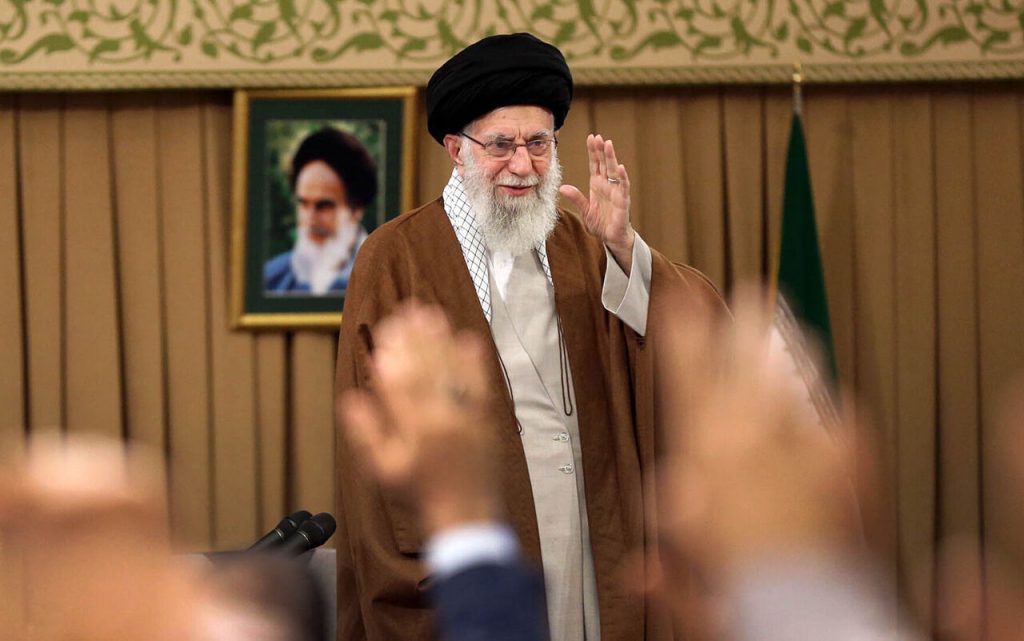
Iran’s snap presidential election was called after the death of the previous head of state, Ibrahim Raisi, in a helicopter crash.
Iran is an Islamic republic and is one of the few existing theocracies in the world. The main power in the country is vested in the spiritual leader, who serves for life. The supreme leader of Iran also holds the post of supreme commander-in-chief. Only a faqih (theologian-legislator) can become him. Currently, the supreme leader of Iran is Supreme Ayatollah Seyyed Ali Hosseini Khamenei. He has held this post since 1989. Interestingly, Ali Khamenei served as president of Iran from 1981-1989. The Supreme Leader appoints the heads of security agencies, state television channels and radio stations, 6 of the 12 members of the Council of Guardians of the Constitution.
The president is the second person in the country to exercise the powers of the head of government, a position that was abolished in 1989. Candidates for the post are approved by the Guardian Council. The President is then elected by popular vote for a four-year term. The office may not be held more than twice in succession.
The President appoints and manages the Cabinet. The composition of the cabinet, as well as vice-presidents, is approved by the Iranian parliament, the Majlis. The Government of Iran is the supreme executive and administrative body. Now it consists of 21 ministers, 10 vice-presidents. The president has no control over the armed forces of the country. Although he appoints the Minister of Defense of the republic, but it can be done only in agreement with the supreme leader of the state. The supreme leader has the right to remove the president from office if two-thirds of Majlis deputies vote in favor of impeachment.
An important role in the power hierarchy of Iran is played by the Council of Guardians of the Constitution. This body consists of 12 members. 6 of them are representatives of the Islamic clergy, who are appointed by the supreme leader. The second half of the body consists of jurists. They are appointed by the head of the judiciary. The Guardian Council can amend the constitution of the republic. It also approves candidates for top government posts. In addition, the body monitors the activities of the Majlis and can veto any bill and return it to parliament for revision.
The Guardian Council is currently headed by Ayatollah Ahmad Jannati. He has held this post since 1988. As we have already mentioned, the Guardian Council decides on the admission of candidates to the elections. In the last election, in 2021, the body allowed 7 people out of 592 who applied. Former President Mahmoud Ahmadinejad was also rejected. Once candidates are approved by the Guardian Council, the second man of the state is elected by popular vote for a four-year term. The 2021 election had a turnout of 48.8%. Toga was won by Ebrahim Raisi with about 62.2% of the vote. Mohsen Rezaei came in second place. He was favored by 11.7% of those who came to the polls.
Three against one
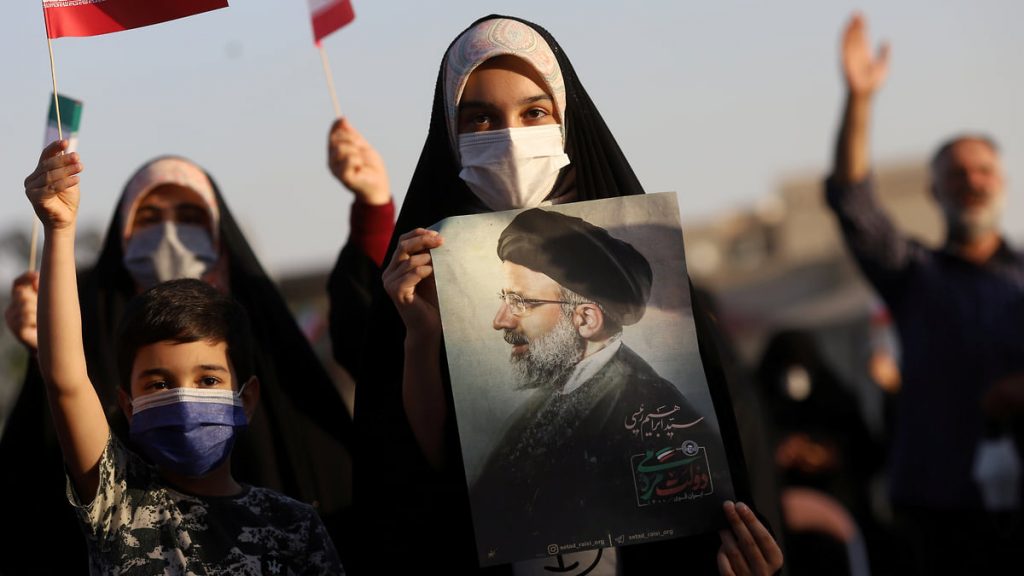
Following the death of President Raisi, Iran’s Election Committee approved a list of six candidates to run in the June 28 early presidential election. The list of candidates for the early elections initially included 80 people, including four women. Meanwhile, in the end, the Iranian authorities decided not to take any risks and included the maximum vetted candidates in the final list. The list included Parliament Speaker Mohammad-Bagher Ghalibaf, former Iranian chief nuclear negotiator (and now the spiritual leader’s representative in the country’s Security Council) Saeed Jalili, Vice President Ghazizadeh Hashemi, Tehran Mayor Alireza Zakani, former Interior Minister Mostafa Pourmohammadi and reformist MP Masoud Pezeshkian. Among the six endorsed candidates, four – Jalili, Zakani, Hashemi and Pourmohammadi – belonged to the extreme conservative wing.
Initial predictions indicated that the main battle would be between two heavyweights close to Ayatollah Ali Khamenei, Mohammad-Bagher Ghalibaf and Saeed Jalili. Both conservatives had fervently supported Ebrahim Raisi in the 2017 and 2021 presidential elections and withdrew their candidacies in his favor. Opinion on the chances of both candidates has diverged. If turnout is low, there is a high probability that Said Jalili will win at the expense of the votes of the most rigid conservatives, who, by the way, does not enjoy broad popular support – moreover, “many people, even within the regime, hate him, considering him an inflexible fundamentalist”. But if the turnout exceeds at least 30%, Mohammad-Bagher Ghalibaf, who is considered to be of the more pragmatic wing of the conservatives, will win.
There is a conventional division into three political directions in Iran: fundamentalists, who advocate a return to the ideology of the 1979 Islamic Revolution; conservatives, whose ideas are similar to those of the fundamentalists, but more flexible; and reformists, who insist on transforming the system of government (in particular, to have republican institutions rather than a supreme leader conduct state affairs).
Pezeshkian was the only reformist candidate allowed into the race. His name became widely known in September 2022 after mass protests broke out over the death of police detainee Mahsa Amini. At the time, Pezeshkiyan said what happened was the authorities’ fault. “It is our fault. We want to introduce religious faith through force. This is scientifically impossible,” the politician, who served as health minister, emphasized. He became the highest-ranking Iranian official to criticize Tehran’s policy of suppressing protests.
Most experts gave Pezeshkian no chance of victory, believing that the reformer was allowed to run to create the illusion that representatives of all factions were represented in the campaign. Other experts believed that Masoud Pezeshkian was allowed to participate in the elections to increase turnout. Pezeshkian’s lack of confidence in his victory, however, gave him certain advantages. He became the sole representative of the moderate forces, so all centrists and reformists would have to either not vote or vote for him.
Unlike the reformists, who were represented by one candidate, the conservative camp looked disjointed. Each of the candidates had their own “support group”. For example, Parliament Speaker Mohammad-Bagher Ghalibaf was backed by the powerful Islamic Revolutionary Guard Corps (IRGC) and the parastatal Tasnim Agency, which is closely affiliated with the IRGC. Behind the supreme leader’s representative in the Security Council, Saeed Jalili, is another group of nomenclature – the clergy and the most radical fundamentalists who reject even the slightest interaction with the West.
As the British newspaper The Telegraph noted, some factions of the IRGC even secretly tried to prevent Saeed Jalili from winning the election, considering him “too tough. In the dispute between the two heavyweights – Ghalibaf and Jalili – the Supreme Ayatollah supported the latter rather than the speaker of parliament. The fact is that Mohammad-Bagher Ghalibaf had previously spoken in favor of continuing nuclear talks with the West. The third conservative candidate has his own support group. Former Interior Minister Mostafa Pourmohammadi, the only cleric in the race, has supporters in the security apparatus.
Given that there was no clear favorite in the conservative camp, influential fundamentalists urged conservative participants in the race to unite around one candidate. On the eve of the election, however, Mohammad-Bagher Ghalibaf and Saeed Jalili rejected speculation that they might withdraw their candidacies in favor of each other. However, calls to unite were heeded by two of the five conservative candidates allowed to run – Amir-Hosein Ghazizadeh Hashemi and Tehran Mayor Alireza Zakani declined to run on June 25 and 26. Both candidates cited a desire to boost the chances of two conservative favorites, Saeed Jalili and Mohammad-Bagher Ghalibaf.
The split in the conservative camp played into the hands of former health minister Massoud Pezeshkian. He was supported by two former Iranian presidents, both reformers – Mohammad Khatami and Hassan Rouhani, as well as former Foreign Minister Mohammad Javad Zarif. Recall that Mr. Zarif was Tehran’s chief negotiator during the negotiation of the terms and signing of the nuclear deal with Iran, from which the previous US president Donald Trump later unilaterally withdrew.
In the first round, Massoud Pezeshkian favored improving relations with the West and resuming talks on the nuclear program. He said, “No country in history has been able to achieve prosperity and growth by closing its borders and wanting to work alone.” Pezeshkian’s words did not endear him to Iran’s supreme leader. In his speech, he lashed out at “some candidates” who he said are in favor of normalizing relations with the US. In this regard, Ali Khamenei emphasized: politicians “linked to America” cannot be “good managers.” Nevertheless, a number of forecasts on the eve of the first round gave victory to Pezeshkian, even though he was not supported by Ayatollah Khamenei and the Iranian nomenklatura.
The economy, women and minorities decided the outcome of the election
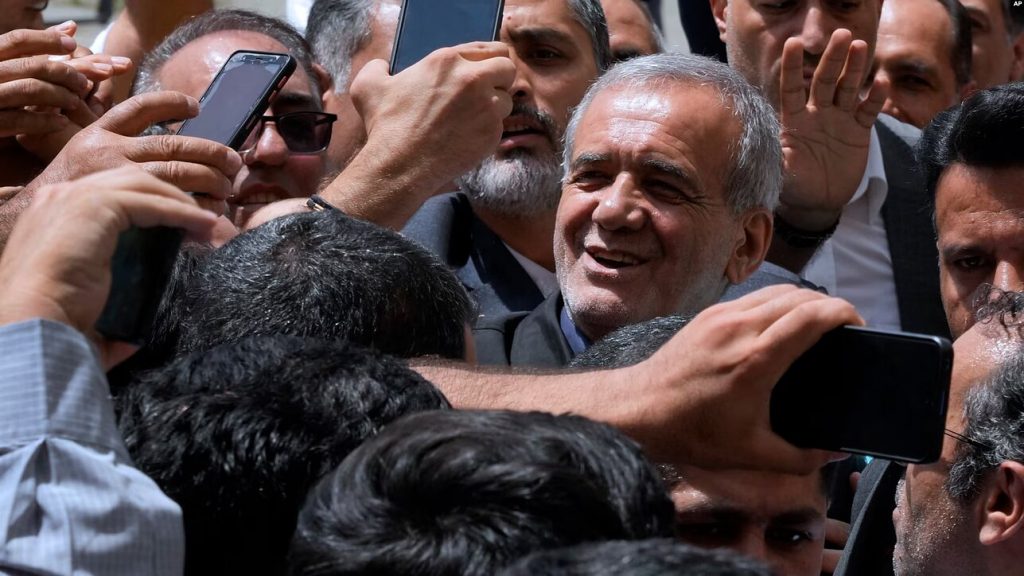
As predicted, Masoud Pezeshkian won the first round of the presidential election with 42.5% of the vote. The second finalist was the extreme conservative, Said Jalili, who garnered 38.6%. But the fact that one of the favorites of the presidential race, 62-year-old speaker of the Majlis, former mayor of Tehran and leader of the conservative party “Progressive and Just People of Islamic Iran” Mohammad Bagher Ghalibaf, did not make it to the second round was the main surprise of the first round. It should also be noted the very low voter turnout, which amounted to only 40%, and became a record low in the history of presidential elections in Iran.
The election of a president in a second round is a rare phenomenon for Iran. The last time the second round was held was in 2005 and the candidates, as they call it without hesitation, immediately rushed into battle. Tolerance and openness were the leitmotifs of Massoud Pezeshkian’s election campaign. He paid great attention to the rights of women and national minorities. During a series of rallies in various cities of Iran, the reformist repeatedly emphasized that he supports the expansion of women’s rights and condemns repression for improperly wearing the hijab.
“We are against any cruel and inhuman behavior against anyone, especially our sisters and daughters, and we will not allow these actions to take place,” Massoud Pezeshkian said. And he promised to involve women and ethnic minorities in his future government. In addition, liberalization in the media and public life was another highlight of Pezeshkian’s campaign. He openly advocated easing restrictions on the Internet, as well as crackdowns on the opposition and the use of force to disperse protests. During the election campaign, he repeatedly promised to “be the voice of the voiceless” and emphasized that peaceful protests should not be suppressed with a “police baton.”
Practically on the eve of election day, the two politicians met for a debate that quickly turned into a fierce debate – and not only on economic topics, as was initially expected. For example, Massoud Pezeshkian called for a gradual improvement in relations with the West and the lifting of sanctions through dialog and negotiations. Emphasizing the importance of Iran’s engagement with the world, he assured, “No country in history has been able to thrive in a cage.” Saeed Jalili, acting as a defender of the current course, disagreed with the metaphor of a caged Iran and accused his opponent of being willing to make mindless concessions to Western powers.
The opponents quickly turned personal. In particular, Masoud Pezeshkian reproached his political opponent for his lack of managerial experience. For his part, the conservative accused his opponent of lacking clear plans for governing the country, warning of the threat of Iran’s international position weakening – as it already had, in his opinion, under the relatively moderate President Hassan Rouhani (2013-2021). Among other things, Saeed Jalili promised during the debate that Iran would achieve economic growth of 8% per year under his presidency. He did not specify how exactly he would achieve this figure, saying only that he wanted to develop ties with Africa and developing countries.
Masoud Pezeshkian mocked his rival’s pledge, caustically remarking that the politician should be executed if he fails to fulfill his own goal and remarking, “We live in a society where many people beg on the streets,” alluding to inflation reaching 40% and rising prices that have skyrocketed in recent months for basic goods such as dairy products, rice and meat. The subsidized price of pita, the most popular product among Iranian households, has risen by at least 230% over the past three years, while red meat has become too expensive for many, with its price jumping 440% to $10 per kilogram. Pezeshkian promised that his administration would “immediately” begin working to lift sanctions and get the economy back on track.
Yet on the eve of Election Day, experts said the chances of victory for both candidates were virtually equal. Massoud Pezeshkian was supported not only by the vast reformist camp, but also by Iran’s ethnic minorities, such as Azeris, Baluchis and Arabs. Saeed Jalili, on the other hand, was backed by all the conservatives who were eliminated in the first round and their electorate: fundamentalists, members of the clergy, and security forces. Mr. Jalili’s candidacy was also supported by his main rival in the first round from among the conservatives – Parliament Speaker Mohammad Bagher Ghalibaf, who is backed by the Islamic Revolutionary Guard Corps. However, the consolidation of conservatives around the figure of Jalili did not bring them the desired result.
The second round was won by reformist Masoud Pezeshkian, who garnered more than 16.384 million votes, while Saeed Jalili received 13.538 million. The second round made voters more interested in the election, with 49.8 percent of those who could vote showing up at the polls. Iran’s supreme ruler, Ayatollah Ali Khamenei, who was among the first to vote on July 5, also appreciated the increased turnout. He said it was “a great step to counter the artificial boycott of the elections that the enemies of the Iranian nation have launched to sow despair.” The increased turnout played to the disadvantage of the conservatives: the reformers managed to awaken the “couch party”, which ensured the victory of their candidate.
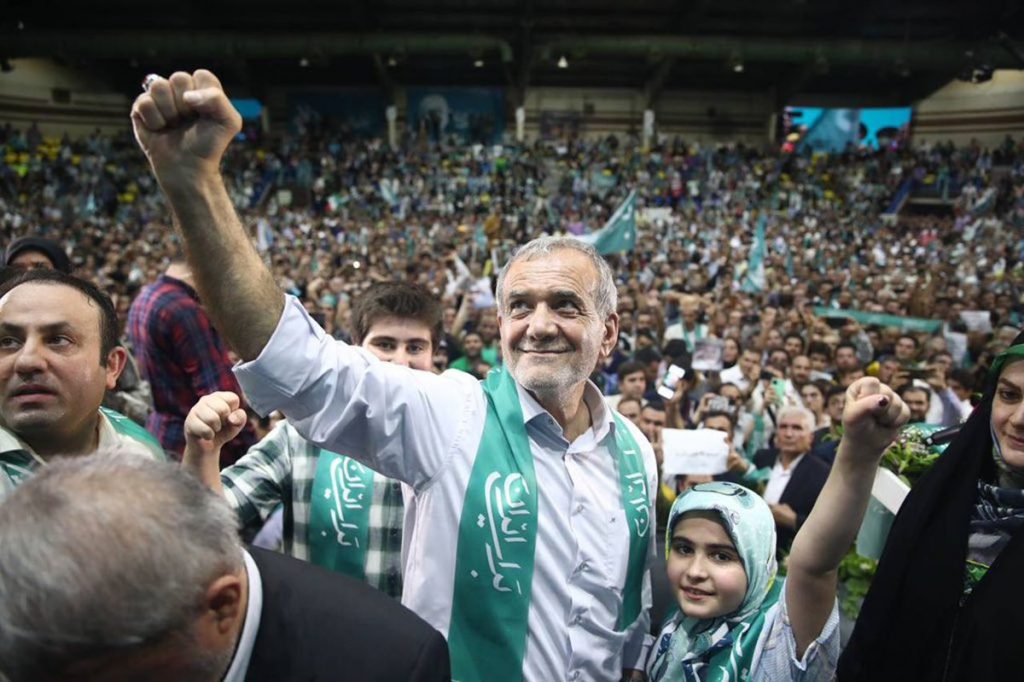
Masoud Pezeshkian is an ethnic Azerbaijani by father and Kurd by mother, a native of the Azerbaijani-Kurdish province of Mekhabad in eastern Azerbaijan. He represented the provincial capital of Tabriz in parliament. In regions with Turkic population, which according to various estimates in Iran is about 40%, Pezeshkian prevailed. Thus, in the provinces of East and West Azerbaijan, 1.6 million people voted for him, while 291,000 people voted for Jalili. In Kurdistan, 284,000 voted for Pezeshkian and 76,000 for Jalili. Minorities on average voted more actively for Pezeshkian, largely because he favored education in national languages.
It was also among Azeris and Kurds that there was the greatest dissatisfaction with the conservatives. They are less religious and as experts have pointed out, if the reformist candidate were Persian and the conservative Azeri, they would still vote for the reformist. In eastern, Sunni and non-Persian-speaking Sistan and Baluchistan, 655,000 voted for Pezeshkian versus 440,000 for Jalili. Voters there believed that Sunnis would have more freedoms under the reformers. In Iran’s predominantly Persian-speaking central regions (56 to 63 percent Persian in the country), Pezeshkian and Jalili were about equally favored, such as in Yazd, with 250,000 votes each. In Hamadan, Jalili had 350,000 and Pezeshkian 330,000.
In the country’s religious center of Shiite theology, the city of Qom, a majority of voters expectedly cast their ballots for conservative Jalili (396,000 against 164,000 for Pezeshkian). In Kerman, he also has a large margin of 773,500 against 479,300 for Pezeshkian. Jalili’s lead is also recorded in the northern province of Semnan: 177,000 against 110,000 for Pezeshkian. The divergent results in the central regions are explained by differences in the general set of values among the population, where religiosity is one of the elements of commitment to the ideas of the Islamic Revolution.
The day after the election, Khamenei expressed his appreciation for all the candidates, wishing that now “everyone will do his best for the material and spiritual prosperity of the country.” He said, “It is appropriate that competitive behavior in the elections be transformed into norms of friendship. The people of Iran have now elected their president. I congratulate the nation, the elected president and all activists,” Khamenei said. At the same time, Iran’s supreme leader advised Pezeshkian to “continue the path of martyr Raisi.” Pezeshkian’s rival Jalili also wished him success on the country’s development path. And promised to work for its benefit himself.
Pezeshkian’s assumption of office, as well as his appointment of a new government, could take place as soon as possible. According to procedure, first the Supervisory Board (the highest house of parliament that oversees the elections) will confirm the elections, and then the Supreme Leader will be informed of the results in a letter. After Khamenei approves it, the inauguration of the elected president will take place in parliament.
According to most experts, the likelihood of Ali Khamenei vetoing a possible victory for Masoud Pezeshkiyan is “virtually nil.” If the supreme leader were threatened by any candidate, he would never be allowed to run at all. It is clear that ideologically the ayatollah is much closer to Said Jalili. The politician in fact broadcasts what the supreme leader wants to convey to the audience. Jalili is completely dependent on the Ayatollah and the latter is absolutely satisfied with this. However, there are also polar opinions that do not look quite plausible. In them, Pezeshkian appears to be the best choice for the ayatollah because of his ability to negotiate with the West to reduce internal tensions.
In any case, a Pezeshkian victory would revitalize the political system and somehow dilute the total dominance of the conservatives, at least for the moment. And this in turn allows us to hope for change, both in domestic politics and foreign policy. At the same time, the president is not the head of state, but the second person He has a significant amount of leverage, but still noticeably limited in decision-making. It will not be easy for him to seriously change course. In addition, the president’s relevance depends very much on his decisiveness and the forces behind him, as well as how cumulatively heavy-handed he is.
Pezeshkian does not yet appear to be a heavyweight who is willing to rethink the game and try to turn Iran in some other direction. There will certainly be steps taken on his part that are markedly different from what was in place under Raisi. There may be relaxations on the dress code and perhaps some attempt to dialog with the West. But it’s hard to imagine him abolishing the vice police, for example, for now. Although even a formal figure who receives a presidential mandate can behave very differently once power is transferred to him. Although even here his options are severely limited by the conservative majority of the Majlis, with whom the new president will have to coordinate the appointment of ministers in the government and without their approval it is impossible to pass new laws.
The victory of a reformer not initially supported by Khamenei adds to the uncertainty. The supreme leader now needs a politician in the presidency who can implement his vision. At the same time, the future president’s main task is to help the 85-year-old Ali Khamenei to organize the transfer of power to a successor whom he has yet to decide on. How Pezeshkian’s victory could change the balance of power in the event of Khamenei’s death is impossible to speculate today, as there are too many unknown inputs.
Will there be a new foreign policy vector?
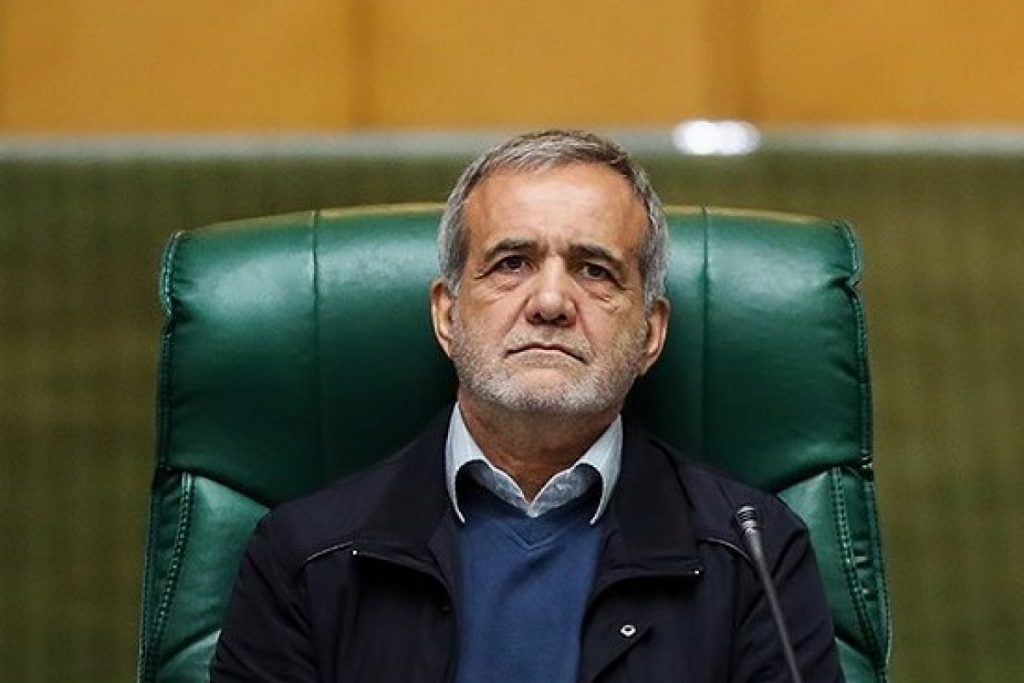
During his election campaign, Pezeshkian tried to outline his foreign policy interest in passing. In order to improve the economic situation, the president of Iran, isolated from the world’s banks and with depleted foreign exchange reserves, will be forced, first of all, to reconsider relations with the United States, which is unlikely to find Khamenei’s approval. The main condition for restoring relations with the U.S. is the revival of a 2015 agreement with world powers in which Iran agreed to limits on its uranium enrichment program in exchange for the lifting of related economic sanctions. The agreement was then scrapped after the U.S. under President Donald Trump withdrew from it and reinstated sanctions in 2018.
The restrictions hit Iranian exports hard – due to shrinking state revenues, the government took unpopular steps by raising taxes and maintaining a budget deficit. Inflation in Iran has reached 40% (it was 7.2% in 2016) and purchasing power has declined. Over the past decade, the Iranian monetary unit rial has lost more than 90% of its value against the dollar. Iran’s economy needs a huge amount of foreign and domestic investment and a revision of the economic management system. In addition, the situation is aggravated by the high level of corruption and chronic nepotism, which, by the way, was recognized by all presidential candidates.
Although the resumption of the “nuclear deal” today seems unlikely due to the upcoming presidential elections in the U.S., where in case Trump wins, the policy of “maximum pressure” against Iran may return. Nevertheless, today the West has a real interlocutor in Tehran. However, the US State Department’s reaction to the outcome of the election in Iran did not tell the story.It called the election “unfree and unfair” and noted that “a significant number of Iranians chose not to participate at all.” Washington refused to congratulate the new president on his victory. As the Financial Times (FT) wrote, other diplomats said on condition of anonymity that they would have welcomed less hostile rhetoric from Iran’s new government. However, the West doubts that Pezeshkian will be able to influence foreign policy in any way, given that the supreme leader makes all the key decisions. As Die Zeit notes, “Pezeshkian is a pacified version of the mullahs’ regime. Its aim is to pacify a deeply disillusioned population and at least stabilize the shaken legitimacy of the theocratic system.”
There is also likely to be no change on the Middle East front. Pezeshkian will not change his hostile attitude toward Israel. During the election, he said that if he won, he would “try to establish friendly relations with all countries except Israel.” And just days ago, he assured Hezbollah leaders that he would support them and other regional “resistance movements” against Israel. “The Islamic Republic of Iran has consistently supported the resistance of the people of the region against the illegitimate Zionist regime,” Massoud Pezeshkian said in a letter to Hassan Nasrallah, Hezbollah’s leader. This was the first foreign policy message of the new Iranian president.
But on the Turkish direction, Iran may make significant progress. So, the president of Turkey. Recep Tayyip Erdogan has already stated that Iranian President-elect Masoud Pezeshkian is “actually…a Turk” and has already promptly exchanged views with him on global and regional issues during a telephone conversation. As the well-known Ukrainian political scientist Konstantin Bondarenko notes, it is worth paying attention to a possible line of contacts – Pezeshkian – Turkish Foreign Minister Hakan Fedan. According to Bondarenko, the former is an active advocate of Iranian-Turkish friendship, while the latter, heading the Turkish intelligence service, emphasized the Turkish vector. Therefore, according to Konstantin Bondarenko, we should wait for possible changes in Iran’s policy in the Middle East and the South Caucasus. As for China, Russia, Saudi Arabia and Syria, the situation is unlikely to change.
The unexpected triumph of Masoud Pezeshkian, with all the possible limitations of his activities as president, still gives hope to Iranians and those who are closely watching the country outside its borders. Without overestimating Pezeshkian’s capabilities and influence, however small, he should just use them. Especially since the real test of change in domestic and foreign policy will come very soon.
